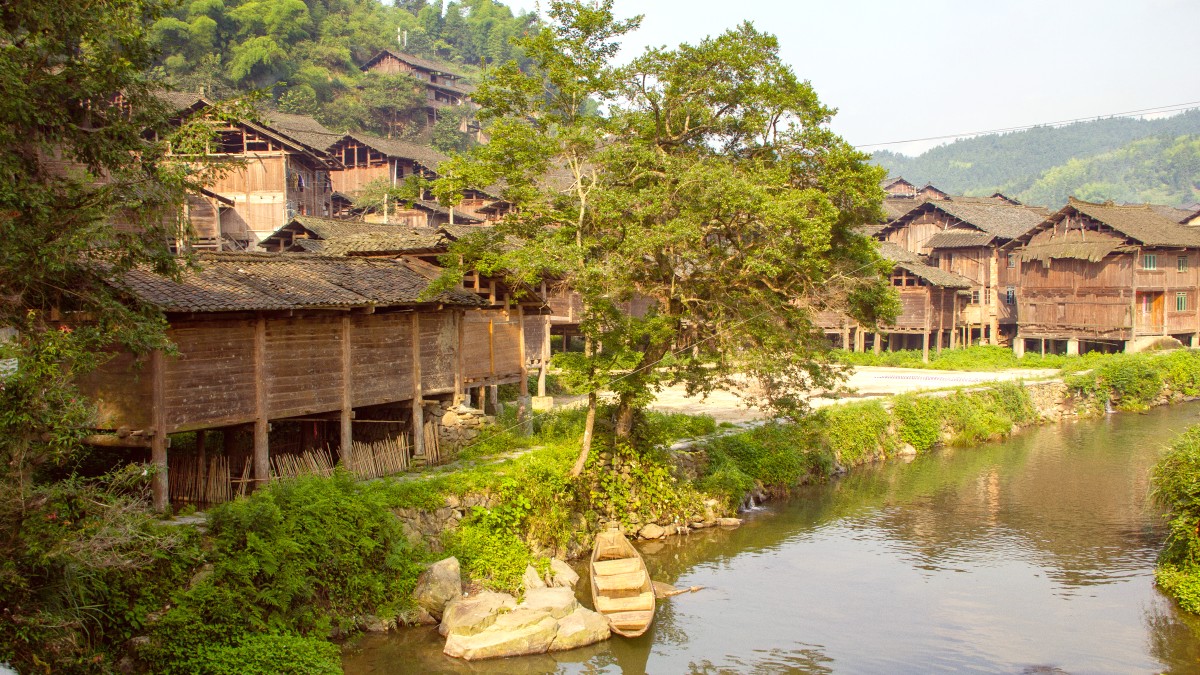
Guizhou, China
This is Guiyang, Guizhou’s provincial capital, a destination often overlooked yet brimming with charm and genuine experiences. It invites you to discover a side of China that stays deeply rooted in its traditions while embracing rapid development. From its unique cuisine that awakens the taste buds to the peaceful parks teeming with wild monkeys, Guiyang presents a journey that connects with nature, history, and a spirited culture.
Guiyang's history spans over 2,000 years, with evidence of human settlement dating back to the Warring States period (475–221 BC). Its strategic position, nestled within a mountainous region, made it a significant military and trade hub in ancient times. This role expanded during the Ming (1368–1644) and Qing (1644–1912) dynasties, when Guiyang functioned as a major center for commerce and a gateway to the southwest of China.
In modern times, Guiyang transformed into a transportation, communication, and economic hub for southwestern China. It gained particular recognition for rapid development in the big data industry, earning it the moniker "Big Data Valley." This modern focus showcases a city respecting its past while embracing technological advancements, positioning itself as a leader in a new era of Chinese development.
Guiyang sits in the heart of Guizhou province, located in the southwestern part of China. The city finds its home on the eastern side of the Yunnan–Guizhou Plateau. This location means Guiyang is surrounded by mountains and hills, forming a natural basin that gives its climate and character. The city's average elevation is around 1,100 meters (3,600 feet) above sea level.
The region features a karst landscape. This geology yields numerous caves, underground rivers, and distinctive peaks. These formations present opportunities for outdoor exploration just outside the city center. Rivers like the Nanming River flow through the urban area, adding to its natural appeal and creating picturesque settings for landmarks like Jiaxiu Tower. Guiyang experiences a humid subtropical monsoon climate. Mild winters and warm, humid summers characterize this climate. Rainfall occurs frequently throughout the year, contributing to the lush greenery surrounding the city. The surrounding mountains and frequent rainfall contribute to the city's generally good air quality compared to some other industrial centers in China.
The topography historically rendered Guiyang a naturally defensible location.
Modern infrastructure, like the Guiyang Metro, navigates this complex terrain.
Numerous parks within the city, like Qianling Park, integrate the natural mountain environment into urban life.
A military and trade hub in ancient times.
The city’s current name, "Guiyang," first appeared during the Yuan Dynasty (1271–1368). The name translates to "north of Guishan," referring to Turtle Mountain, a prominent peak nearby. Guiyang was formally established as a prefecture in 1292, marking its official administrative recognition. Throughout its long history, Guiyang has been a melting pot of various ethnic groups. Their traditions, languages, and unique artistic expressions interwoven into the city's fabric over centuries.
During the turbulent period of World War II, Guiyang became a significant refuge and an industrial area. Many factories and educational institutions relocated to the city, seeking safety from conflict in eastern China. This influx of people and resources further shaped Guiyang's development, laying groundwork for its post-war growth.
In modern times, Guiyang transformed into a transportation, communication, and economic hub for southwestern China. It gained particular recognition for rapid development in the big data industry, earning it the moniker "Big Data Valley." This modern focus showcases a city respecting its past while embracing technological advancements.
Historical landmarks like Jiaxiu Tower stay strong reminders of its deep past, standing proudly amidst the evolving urban landscape.
This overview covers the city’s essential details, from its official name and administrative status to its population, size, and what makes it a distinct place to visit. These facts present a foundational comprehension of the city before you explore its many facets in more detail.
These details lay the groundwork for your Guiyang adventure, preparing you for the city's unique charm and offerings. The following sections will build upon this foundation, offering practical advice and insights for your visit.
Name: Guiyang (贵阳), Province: Guizhou (贵州), Elevation: Approx. 1,100 meters (3,600 feet)
Population (2020): Approx. 5,987,018, Area: Approx. 8,034 sq km (3,102 sq mi)
Major Industries: Big data, advanced manufacturing. Dialect: Southwestern Mandarin (Guiyang dialect).
A range of compelling attractions draws visitors to Guiyang's landscape and rich history.